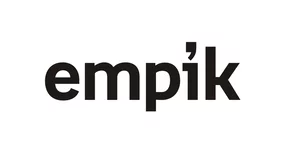We don’t sell a tool — we design a solution for your business.
We start by identifying your goals, challenges and data architecture. Together, we define the most critical objectives and success metrics.
We implement PIM platforms that help companies scale product data management and reduce time-to-market by up to 60%.
Boost product data quality, accelerate digital commerce and centralize your content with enterprise-grade PIM solutions.
Trusted by enterprise leaders in retail, manufacturing, pharma and distribution
15 years
of experience
50+
enterprise-level PIM implementations
10 milions+
stock keeping units
What is the Product Information Management process?
Understanding how PIM works is key for manufacturers, distributors, and retailers who want to scale product data efficiently.
Product Information Management (PIM) is the strategic process of collecting, organizing, enriching, and distributing all product data from a single, trusted source. It goes far beyond basic catalogue management. A modern PIM system ensures that product information is accurate, complete, and consistent across every sales and marketing channel.
PIM enables companies to:
- Manage data across global markets — including multiple languages, currencies, and regulatory standards.
- Centralize product information from ERP, PLM, CRM and other sources.
- Accelerate product launches by reducing time spent on manual updates.
- Ensure consistency and accuracy across websites, marketplaces, POS, print, and partner systems.
As e-commerce and omnichannel retail continue to grow, product data has become more complex and scattered. Without PIM, teams often face duplicated work, inconsistent product details, and delays in time-to-market.
Leading enterprises use PIM to create a single source of truth, streamline workflows, and achieve measurable business results — including faster launches, fewer errors, and better customer experiences.
Common questions about PIM:
- What’s the difference between PIM and ERP?
ERP manages operations and logistics; PIM focuses on enriching and distributing product content. - Who benefits most from PIM?
Manufacturers, distributors, and retailers selling across multiple channels or regions. - How fast can a PIM system be implemented?
Typically within weeks to a few months, depending on business complexity.
A well-implemented PIM process connects people, systems, and data — enabling businesses to scale faster, operate smarter, and grow globally.
What is a PIM system? What is Product Information Management?
Product Information Management (PIM) systems are sophisticated tools that enable the central management of product information. They enable companies to collect, store, update and share product data from a single location. This greatly simplifies quotation management processes, improves information consistency and increases operational efficiency.
A modern PIM platform is the backbone of digital transformation — integrating product data, marketing assets and sales channels into one source of truth. It delivers automation that eliminates manual work, speeds up product launches, and ensures consistent messaging across every market and department. By connecting teams and systems, PIM enables companies to scale faster, reduce costs and maintain full control over their product information.
Shorten your time-to-market by up to 70%, reduce product-data maintenance costs by 40%, and eliminate data-errors that can disrupt sales — delivering a tangible ROI from your PIM investment.
How we implement PIM — step by step
A proven process for seamless PIM implementation
Business needs analysis
Solution design
Clear scope, realistic timeline, zero surprises.
Our team creates a tailored system architecture and data model based on your processes and sales channels.
Integration & Data flow
All your product data — in one place.
We connect PIM with your existing systems (ERP, CRM, e-commerce) to ensure data consistency and real-time updates.
Data migration & standardization
From chaos to structured, unified data.
We clean, structure and migrate your product data, ensuring accuracy and compatibility.
Testing & training
No black boxes. Full transparency.
We validate the system, run scenarios, and train your team so they can work confidently from day one.
Go-Live & optimization
Your product data infrastructure — ready to scale.
We launch the solution and monitor key metrics to optimize performance.
Looking for a proven PIM implementation partner?
LemonMind brings 15+ years of experience delivering enterprise-grade PIM solutions for market leaders like Rossmann, VOX Capital Group, Ceramika Paradyż and Polbruk S.A.
We help brands across retail, manufacturing and distribution scale product data management, accelerate launches and keep every channel in sync.
Our numbers speak for themselves
30 experts
and consultants on board
6+ industries
including retail, manufacturing and FMCG
1 month
implementation time of our Fast and Simple PIM package
Why do you need PIM?
Without a central system, product data quickly turns into chaos — inconsistent information, slow launches and frustrated customers.
A PIM platform creates one reliable source of truth for your entire product ecosystem. It automates manual tasks, accelerates product launches and ensures customers always see accurate, up-to-date information.
As your business grows, PIM scales effortlessly, enabling new sales channels, languages and markets without adding complexity. Rich, consistent data builds trust and drives more conversions.
Reduce time-to-market by up to 70 %, cut product-data maintenance costs by 40 %, and eliminate data-errors that risk sales disruptions.

Functionality of PIM systems
A modern PIM system ensures your product data is accurate, consistent and always up-to-date across every sales and marketing channel. No more silos, duplicates or delays.
With PIM as a central hub, your teams can manage product information once and distribute it everywhere — to e-commerce platforms, marketplaces, partners, catalogues and apps.
The result: a better buying experience for customers, faster product launches, lower operating costs and full control over every channel.
From scattered data → to one source of truth → to every channel:
How does PIM reduce the time spent searching for information?
Before implementing a PIM system, 83% of manufacturing employees and 53% of distribution staff waste over 2 hours every week just looking for product information (source: Product Information Management Theory and Practice). That’s lost productivity, slower decisions, and higher costs.
With PIM, all product data lives in one central source of truth — easy to find, update and share. Teams spend less time searching and more time selling, launching and improving products.
- Faster decisions,
- Lower operating costs,
- Higher profitability.
Companies with efficient product-data management become more agile and competitive, reacting faster to market changes and delivering exactly what customers need.
Data centralisation and integration
A modern PIM system becomes the single source of truth for all your product data — accessible, accurate and always up to date.
It integrates seamlessly with CRM, ERP and e-commerce platforms, eliminating data silos and ensuring your teams work with the same, reliable information. As your business grows, PIM scales with you — no additional complexity.
Real-time updates sync instantly across all sales channels, boosting customer experience and giving you full control over product information, globally and locally.

One source of truth. All product info in one place

Connect easily
ERP, CRM & e-commerce

Scale without friction
Grow into new markets effortlessly

Always up to date
Sync data in real time
Not sure which PIM fits your business best?
We’ll help you choose the right one — and make it work for you.
Preparing for the implementation of a PIM system requires an analysis of the company's needs and an assessment of the organisation's readiness. It is essential to understand what objectives the PIM system is expected to achieve and what processes it is expected to streamline. Choosing the right PIM platform is a strategic decision that impacts efficiency, scalability and growth. Our experts analyse your needs and recommend a solution tailored to your processes, sales channels and business goals.
We work with the world’s leading platforms Pimcore, Akeneo and Ergonode, delivering flexible, future-proof architectures for retail, manufacturing and distribution leaders.
How does the PIM system help solve problems in product information management?
Imagine all your product data — descriptions, specs, media, documents — unified in one central platform. No more scattered spreadsheets or version chaos. Any update made in the PIM is instantly synchronised across every channel — e-commerce, partner platforms, printed catalogues, marketplaces and apps. Your teams work faster, errors disappear, and customers always see up-to-date, consistent product information. One admin panel gives full control and flexibility, tailored to your workflow.
-
1Reduced management costs - less manual work, more efficiency
-
2Consistent communication - one version of truth across teams
-
3Data consolidation - no silos, one source of product info
-
4Easy management - all updates from one panel
-
5Increased sales - faster launches, better product data
Examples of PIM system use
in various industries
Challenge: Managing thousands of product variants, technical specifications and certificates across multiple partners.
Solution: Centralising all product data and integrating PIM with the B2B platform.
Impact: 50 % faster new offer rollout and 100 % data consistency across every channel.
See how it works
Challenge: Inconsistent product information coming from dozens of suppliers and frequent update delays.
Solution: PIM implementation with automated data imports, attribute standardisation and validation rules.
Impact: 70 % fewer product data errors and 35 % faster time-to-market.
Challenge: A large product portfolio with many variations in colours, materials and sizes, managed across multiple systems.
Solution: PIM implementation with automated catalogue generation and e-commerce integration.
Impact: 60 % less manual work, real-time multilingual updates and seamless scaling.
See how it works
LemonMind - your trusted partner in digital transformation
As a specialised digital implementation partner, we design and deliver end-to-end solutions that optimise product operations:
- PIM / MDM systems
- e-commerce and B2B platforms
- product configurators & selection systems
- digital catalogues and web services.
Our team combines strategic consulting with technical expertise to ensure smooth implementation, system scalability and measurable business results.
We implement Pimcore, Akeneo, Ergonode for clients seeking enterprise-grade PIM.
We are a Platinum Partner of Pimcore and offer full support for the implementation of Akeneo.
Let’s build your future-proof product architecture together.

Make an appointment for a consultation with an expert
Want to learn more about how a PIM system can revolutionise your company's product information management? Arrange a no-obligation meeting with Martin Broda. Martin will help you understand how PIM can optimise your processes, ensure consistency of information across all sales channels and improve your workflow.
Case study:
Our clients' PIM implementation stories
From data chaos to a central PIM HUB for Ceramika Paradyż
Ceramika Paradyż needed a single source of truth for thousands of SKUs managed across multiple channels. We implemented a central product data hub, integrating existing systems and enabling
Customer: Ceramika Paradyż

PIM + Digital Commerce: personalizing furniture sales at scale
Holzpiloten wanted to offer fully customizable products online while maintaining consistent product information. We built a PIM system with Digital Commerce module, allowing dynamic product
Customer: HOLZPILOTEN GmbH
Is it time for a PIM system?
If you're finding it increasingly difficult to keep up with the proliferation of products and data stored in different places, it could be a sign that you need a PIM system. Especially if:
- You sell products on different platforms and want your information to be consistent and up to date.
- You deal with multiple suppliers who provide data in different formats.
- Your company has a growing number of multimedia materials that need to be linked to products.
- You operate in international markets where you need to adapt information to different languages and currencies.
The PIM system will help you meet these challenges, streamline your workflow and improve data quality, resulting in better sales results.
Frequently Asked Questions (FAQ)
PIM (Product Information Management) is a system for the central management of product information. It enables product data to be collected, stored, updated and shared in one place.
Implementing a PIM improves data integrity, automates processes, reduces time to market and increases customer satisfaction.
Implementation times vary depending on the size of the project, but typically include stages from business needs analysis to full system go-live, and take from a few weeks to a few months.
Yes, PIM can be integrated with CRM, ERP, eCommerce and other tools for seamless data management across the enterprise.
To calculate the ROI of a PIM implementation, it is necessary to weigh the cost of implementation against the savings and benefits the system brings. By reducing labour costs, speeding time-to-market and eliminating data errors, it is easy to see that a PIM investment pays for itself quickly. Increased revenue and savings from process automation and improved collaboration between departments contribute to a significant return on investment, making the PIM system a key tool in optimising business operations.
PIM is ideal for companies with a large number of products, such as e-commerce, manufacturing, HVAC, and any company that wants to centralise and automate product information management.
PIM Academy
Learn more about Product Information Management, Master Data Management and how to use Artificial Intelligence to automate your product information porcess
What is the PIM system?
The process of entering and editing product data is taking more and more time for employees. PIM - Product Information Management - one platform to manage them all.
AI-powered data management: How it can improve your PIM system ?
This post will explore how AI-powered data management can help you to better organize and optimize your product information, leading to improved sales and marketing efforts.
Automating PIM work with AI: Use cases and customer benefits
Automating PIM work with AI: Use cases and customer benefits
How Much Does PIM System Implementation Cost? Key Factors and a Simple Algorithm for Estimation
How Much Does PIM System Implementation Cost? Key Factors and a Simple Algorithm for Estimation
Need a PIM system?
Discover the potential of your business with us

Martin Broda
+48 723 395 567










